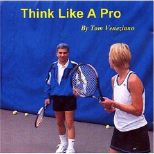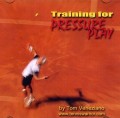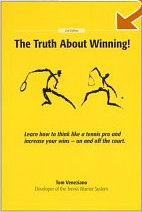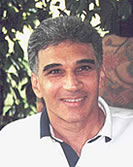People often confuse an athletic, coordinated player who possesses elegant, fluent, rhythmic, by-the-book strokes with a player who possesses consistency. If the player looks good, we assume he (or she) is the better player. The tennis industry and many coaches support this assumption by forcing players into a smooth, coordinated style that is not compatible with that player's inherent ability or his (or her) inherent physical and mental capacities.
If you are a player who does not possess athletic agility in your natural movement, you may think you cannot compete with the naturally athletic player. On the other hand, if you are a player who is athletically gifted you will think you should beat the player who is not athletic.
THE ILLUSION
A good example of this misconception is the extremely athletic and gifted junior I once coached. At a tournament her opponent was ranked number 10 in the state. My student was the 55th ranked player. The higher ranking player did not have the classical, smooth, natural strokes or movement that my player possessed. Of course, everyone watching assumed my player would win. Wrong! She lost 6-2, 6-2.
The parents, and the player, were annoyed. "How did this happen?" the parents wondered. Their daughter was a much better and a more fluent-looking player. I explained that looking better does not matter, but that the practice (lots of repetition) and how long a player has been training does matter.
My player performed mechanically better and looked smoother, but she began playing tennis at the age of 11 (she was now 15). The other girl had been playing since she was 7 and was now 16, and her training regimen was much more intensive than what my player was willing to endure.
THE REALITY
Coordination and athleticism does not mean consistency. Stop confusing smooth, rhythmic mechanically correct strokes as being the benchmark for consistency. If this were true, Rafael Nadal would never beat Roger Federer. And John McEnroe would never have been the number one player in the world.
So what does matter? Simple! An intense training program with much repetition and the self-discipline to hang in there for years. I think that adequately describes Nadal and a host of other pros!
If you do not possess super-athleticism, that does not matter. Self-discipline, weekly programs and the acceptance of your own individual style of play will equip you to compete with the more coordinated, elegant looking player. Winning never has and never will require superficial perfection!
In fact, often the player with the focused mental toughness but who does not possess inherent athleticism will go far beyond the so-called elegant athlete. Emil Zátopek from Czechoslovakia comes to mind. You may not have heard of him, but he was one of the greatest runners of the twentieth century. Yet his style of running was bizarre to say the least! Below is a description of his running style from Wikipedia. See what you think.
"Zátopek's running style was distinctive and very much at odds with what was considered to be an efficient style at the time. His head would often roll, face contorted with effort, while his torso swung from side to side. He often wheezed and panted audibly while running, which earned him the nicknames of 'Emil the Terrible' or 'the Czech Locomotive.' When asked about his tortured facial expressions, Zátopek is said to have replied that 'It isn't gymnastics or ice-skating, you know.'"
You may be thinking he must not have accomplished much, he's just another runner. Here are some of Emil's accomplishments.
"'The Locomotive' or the 'Bouncing Czech' as he came to be known, dominated long distance running from 1948 until 1954 when he won a remarkable 38 consecutive 10,000 meter races, including 11 in 1949 alone. He set 18 world records over various distances including every record from 5K to 30K, and won four Olympic gold medals and one silver."
"In 1952 at the Helsinki Olympics Emil achieved the impossible. Despite a doctor's warning that he shouldn't compete due to a gland infection two months before, he won the 5,000 meter, the 10,000 meter and the marathon, all in a span of eight days. He set a new Olympic record in all three events, and he had never run a marathon before!"
What did some coaches think of him? Here is what Larry Snyder, Ohio State track coach, said about Emil Zátopek's contorted style of running: "He does everything wrong but win."










 You will join 13,000 other subscribers in receiving news of updates to the Tennis Server along with monthly tennis tips from tennis pro Tom Veneziano.
You will join 13,000 other subscribers in receiving news of updates to the Tennis Server along with monthly tennis tips from tennis pro Tom Veneziano. 